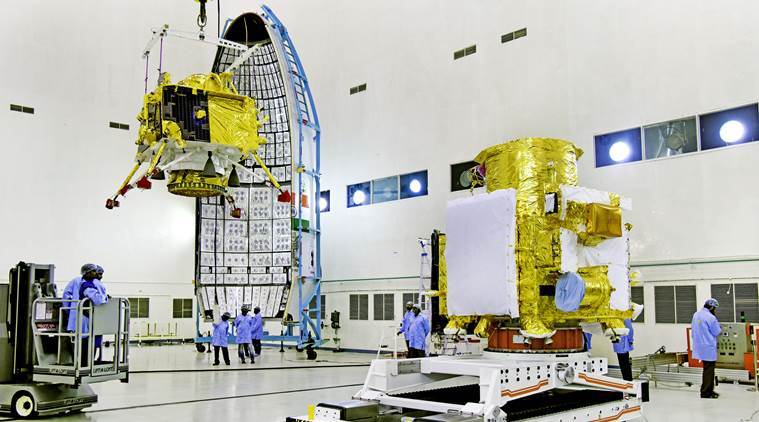0%

Source-The Indian Express
NEW-DELHI: Chandrayaan-2 developed by ISRO (Indian Space Research Organization) is a second lunar exploration mission after Chandrayaan-1. The mission is planned to be launched to the Moon on July 15, 2019 by a Geosynchronous Satellite Launch Vehicle Mark III (GSLV Mk III). India’s Chandrayaan-2 mission after its lift-off from Sriharikota will head close to the South Pole of the Moon for a soft landing.
Almost the entire Chandrayaan-2’s orbiter, lander and rover have been designed and made in India. Former ISRO Chairman AS Kiran Kumar says, “We are going near the South Pole because it is a different place than what has been done earlier. You can expect to find something different only when you look at newer places. This time we are going to a place where others have not gone — the Moon’s South Pole.”
A region of South Pole on the Moon s little explored till date – most lunar landings have taken place in the northern hemisphere or in the equatorial region. The Chinese mission landed in the northernmost part, followed by Russia’s Luna missions. Most of the American lunar landings, including Apollo missions, were in the Moon’s equatorial region. After landing, the rover will carry out chemical analysis of the lunar soil and the lander will measure the Moon’s quakes and dig into the lunar crust, among other things.
India will continue its search for water on the lunar surface after Chandrayaan-1 in 2009 made the breakthrough of discovering the presence of water molecules on the Moon’s surface. Only when native water can be found on the Moon can humans ever hope to live there. Prime Minister Narendra Modi has vowed to send a manned mission into orbit by 2022. Most experts say the geo-strategic stakes are small – but that India’s low-cost model could win commercial satellite and orbiting deals. (Agencies)